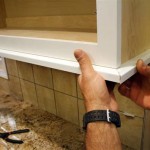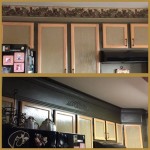Kitchen Cabinet Door Suppliers: A Comprehensive Guide
The selection of kitchen cabinet doors plays a pivotal role in defining the overall aesthetic and functionality of a kitchen space. The quality, design, and material of these doors significantly impact the durability, ease of maintenance, and, ultimately, the perceived value of the kitchen. Consequently, choosing the right kitchen cabinet door suppliers is a critical decision for homeowners, contractors, and interior designers alike. Navigating the market requires understanding the various types of suppliers, the range of door styles and materials available, and the factors that contribute to a supplier's reputation and reliability. This article aims to provide a comprehensive overview of kitchen cabinet door suppliers, offering insights into the key aspects to consider when selecting a partner for your project.
The kitchen cabinet door market is diverse, encompassing a spectrum of suppliers ranging from large-scale manufacturers to smaller, localized businesses. Each type of supplier offers distinct advantages and disadvantages, depending on the specific needs and priorities of the customer. Understanding these differences is crucial for making an informed decision that aligns with budgetary constraints, design preferences, and project timelines. Moreover, the evolving landscape of materials and manufacturing techniques continuously introduces new options, requiring suppliers to stay abreast of industry trends and technological advancements.
Types of Kitchen Cabinet Door Suppliers
The kitchen cabinet door supply chain comprises several distinct types of businesses, each catering to different segments of the market. These can be broadly categorized as large-scale manufacturers, semi-custom manufacturers, custom cabinet makers, and retailers or distributors. Each type offers a unique blend of product selection, pricing, lead times, and customer service.
Large-Scale Manufacturers: These companies operate on a mass production scale, typically offering a standardized range of door styles, materials, and finishes. Their primary advantage lies in their ability to offer competitive pricing due to economies of scale. Large-scale manufacturers often have established distribution networks, making their products readily available across wide geographical areas. However, customization options are usually limited, and lead times, while generally predictable, can be longer than with smaller suppliers due to the sheer volume of orders they process. These manufacturers are a good choice for projects prioritizing cost-effectiveness and requiring a standardized aesthetic.
Semi-Custom Manufacturers: Semi-custom manufacturers offer a middle ground between mass-produced and fully customized cabinet doors. They provide a wider range of options than large-scale manufacturers, allowing for modifications to door sizes, styles, and finishes within pre-defined parameters. This flexibility allows customers to achieve a more personalized look without incurring the high costs associated with fully custom cabinetry. Lead times tend to be shorter than those of large-scale manufacturers, but longer than custom cabinet makers. This type of supplier is well-suited for projects seeking a balance between affordability and customization.
Custom Cabinet Makers: Custom cabinet makers specialize in creating bespoke cabinet doors tailored to the exact specifications of the customer. They offer the greatest degree of design flexibility, allowing for unique shapes, sizes, materials, and finishes. This option is ideal for projects with unusual dimensions, specific design requirements, or a desire for a truly one-of-a-kind kitchen. However, custom cabinet makers typically have higher prices and longer lead times due to the labor-intensive nature of their work. They are best suited for high-end projects where budget is less of a concern and design precision is paramount.
Retailers and Distributors: These businesses act as intermediaries between manufacturers and end-users. They typically carry a wide variety of cabinet door styles and materials from multiple manufacturers, offering customers a broad selection of options in a single location. Retailers and distributors can be a convenient option for customers seeking a one-stop shop for all their kitchen remodeling needs. However, they may not offer the same level of customization as manufacturers and custom cabinet makers, and their pricing may be higher due to the added layer of distribution.
Key Factors to Consider When Choosing a Supplier
Selecting the right kitchen cabinet door supplier requires careful consideration of several key factors. These include product quality, material options, customization capabilities, pricing, lead times, warranty, and customer service. A thorough assessment of these factors will help ensure a successful outcome that meets both the aesthetic and functional requirements of the project.
Product Quality: The quality of the cabinet doors is paramount, as it directly impacts their durability, longevity, and overall appearance. Look for suppliers who use high-quality materials, employ skilled craftsmanship, and adhere to strict quality control standards. Request samples of their work and carefully examine the construction, finish, and hardware. Ask about the types of joinery used and the quality of the paint or stain application. A reputable supplier will be transparent about their manufacturing processes and willing to provide detailed information about their products.
Material Options: The choice of material significantly influences the appearance, durability, and cost of the cabinet doors. Common materials include solid wood, wood veneer, laminate, thermofoil, and metal. Each material has its own unique advantages and disadvantages in terms of aesthetics, cost, durability, and maintenance requirements. A good supplier will offer a wide range of material options to suit different design styles and budgets. Moreover, they should be knowledgeable about the properties of each material and able to advise customers on the best choice for their specific needs.
Customization Capabilities: The level of customization required will depend on the specific design goals of the project. If the project requires non-standard sizes, unique door styles, or custom finishes, it is essential to choose a supplier with strong customization capabilities. Inquire about the supplier's ability to create custom profiles, match existing colors, and accommodate specific hardware requirements. A supplier with advanced manufacturing technology and a skilled design team will be better equipped to handle complex customization requests.
Pricing: Budget is a critical consideration for most kitchen remodeling projects. Obtain quotes from multiple suppliers and carefully compare the prices of similar products and services. Be sure to factor in the cost of materials, manufacturing, finishing, hardware, and installation. While it is tempting to choose the lowest price, it is important to prioritize value over cost. A slightly more expensive supplier who offers higher quality products and better customer service may ultimately be a better investment in the long run.
Lead Times: Lead times refer to the amount of time it takes for the supplier to manufacture and deliver the cabinet doors. Lead times can vary significantly depending on the type of supplier, the complexity of the order, and the current demand. It is essential to clarify lead times upfront and ensure that they align with the project timeline. Ask about any potential delays and inquire about the supplier's ability to expedite orders if necessary.
Warranty: A warranty provides assurance that the supplier stands behind their products and services. Review the warranty terms carefully to understand the coverage and limitations. A comprehensive warranty should cover defects in materials and workmanship for a reasonable period of time. Inquire about the process for filing a warranty claim and the supplier's commitment to resolving issues promptly and effectively.
Customer Service: Excellent customer service is essential for a smooth and successful project. Look for a supplier who is responsive, knowledgeable, and helpful throughout the entire process, from initial consultation to final installation. Read online reviews and testimonials to gauge the supplier's reputation for customer satisfaction. A supplier who is committed to providing exceptional customer service will be more likely to address any concerns or issues promptly and professionally.
Trends in Kitchen Cabinet Door Materials and Styles
The kitchen cabinet door market is constantly evolving, driven by changing consumer preferences, technological advancements, and new material innovations. Staying abreast of the latest trends is crucial for suppliers seeking to remain competitive and relevant in the industry. These trends influence the styles, finishes, and materials preferred by homeowners and designers.
Sustainable Materials: With growing environmental awareness, there is an increasing demand for sustainable and eco-friendly kitchen cabinet door materials. Suppliers are responding by offering options such as bamboo, recycled wood, and formaldehyde-free plywood. These materials not only reduce the environmental impact of kitchen remodeling but also offer unique aesthetic qualities.
Minimalist Designs: Clean lines, simple shapes, and understated hardware are hallmarks of the minimalist design trend. This trend is reflected in the popularity of slab doors, handleless cabinets, and integrated appliances. Minimalist kitchen cabinet doors often feature smooth, matte finishes and neutral colors, creating a sleek and contemporary look.
Natural Wood Finishes: The warmth and character of natural wood finishes are making a comeback in kitchen design. Light and medium-toned woods, such as oak, maple, and walnut, are particularly popular. These finishes showcase the natural grain patterns and variations of the wood, adding a touch of organic beauty to the kitchen. Natural wood finishes are often paired with minimalist designs to create a balanced and harmonious aesthetic.
Color Trends: While white remains a classic and versatile choice for kitchen cabinets, other colors are gaining popularity. Gray, navy blue, and green are increasingly being used as accent colors or for entire kitchen cabinets. These colors add depth and visual interest to the space, creating a more personalized and inviting atmosphere.
Integrated Technology: Smart home technology is increasingly being integrated into kitchen design, including cabinet doors. Features such as touch-activated opening mechanisms, automatic lighting, and built-in charging stations are becoming more common. These technologies enhance the functionality and convenience of the kitchen, making it a more enjoyable space to use.
The selection of kitchen cabinet door suppliers is a complex process that requires careful consideration of various factors. By understanding the different types of suppliers, the key factors to consider when choosing a partner, and the latest trends in materials and styles, customers can make informed decisions that align with their specific needs and preferences. The ultimate goal is to select a supplier who can deliver high-quality products, exceptional customer service, and a kitchen that reflects the homeowner's individual style and taste.

Kitchen Cabinet Door Manufacturer Inframe Or Shaker Doors

Pvc Kitchen Cabinet Door Advantages And Disadvantages Supplier

Fast Cabinet Doors Custom Replacement For Kitchen Cabinets Cupboards

Fast Cabinet Doors Custom Replacement For Kitchen Cabinets Cupboards

Kitchen Cabinet Doors Therrmed Melamine Mdf Acrylic Panels

Kitchen Doors At Trade S Diy Kitchens

Cabinet Door Types Styles Cliqstudios

Cabinet Doors China Door Kitchen Manufacturers Suppliers On Made In Com Page 2

In Door Manufacturing Are Largest Suppliers Of Kitchen Cabinet Doors 100 Frame Solid Wood And Accessories Manufacturers The Highest Quality Timbers You Will Find

In Frame Kitchens Kitchen Cupboard Door Suppliers Trade
Related Posts








